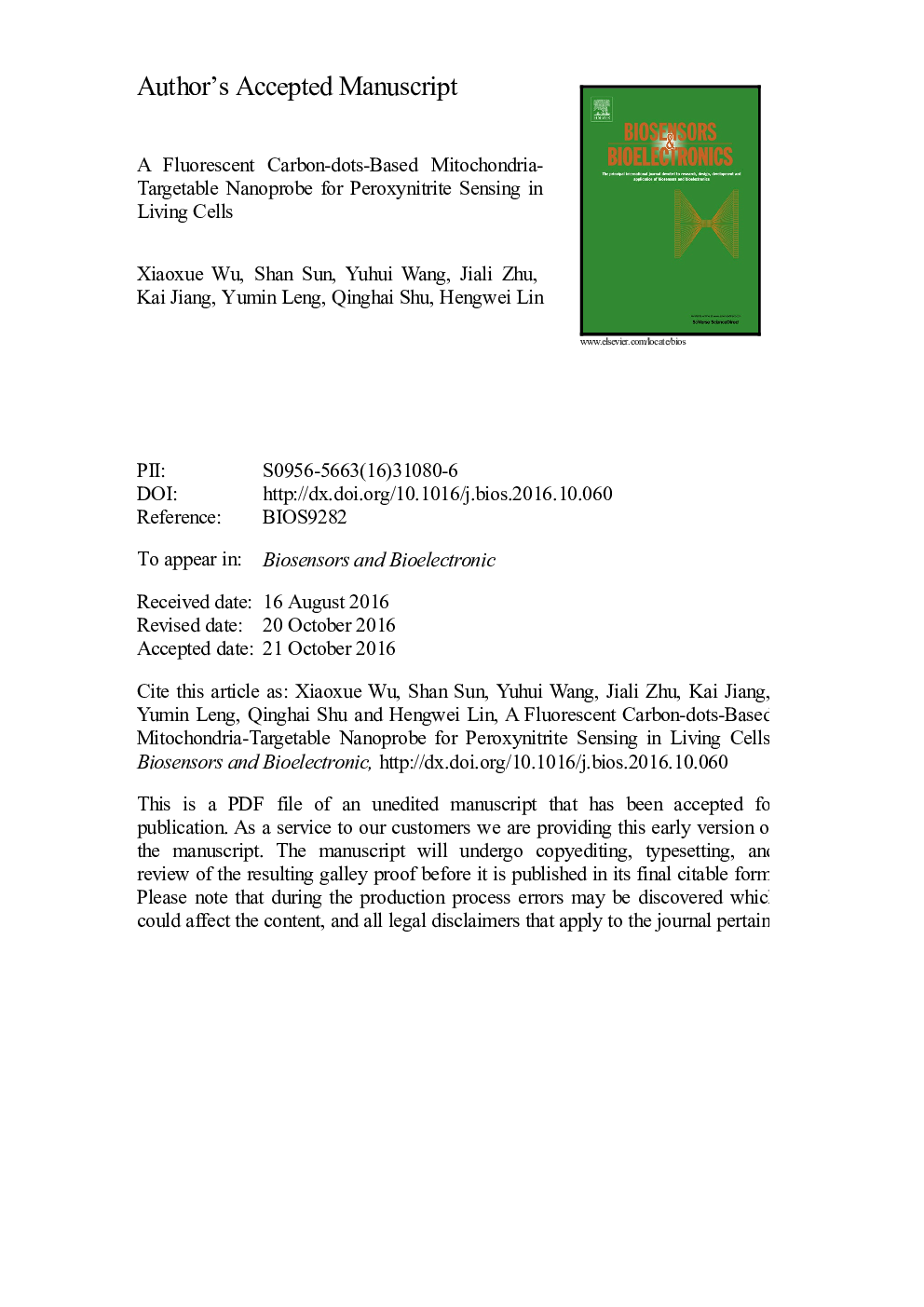| Article ID | Journal | Published Year | Pages | File Type |
|---|---|---|---|---|
| 5031280 | Biosensors and Bioelectronics | 2017 | 20 Pages |
Abstract
Mitochondria, the power generators in cell, are a primary organelle of oxygen consumption and a main source of reactive oxygen/nitrogen species (ROS/RNS). Peroxynitrite (ONOOâ), known as a kind of RNS, has been considered to be a significant factor in many cell-related biological processes, and there is great desire to develop fluorescent probes that can sensitively and selectively detect peroxynitrite in living cells. Herein, we developed a fluorescent carbon-dots (C-dots) based mitochondria-targetable nanoprobe with high sensitivity and selectivity for peroxynitrite sensing in living cells. The C-dots with its surface rich in amino groups was synthesized using o-phenylenediamine as carbon precursor, and it could be covalently conjugated with a mitochondria-targeting moiety, i.e. triphenylphosphonium (TPP). In the presence of peroxynitrite, the fluorescence of the constructed nanoprobe (C-dots-TPP) was efficiently quenched via a mechanism of photoinduced electron transfer (PET). The nanoprobe exhibited relatively high sensitivity (limit of detection: 13.5Â nM) and selectivity towards peroxynitrite in aqueous buffer. The performance of the nanoprobe for fluorescence imaging of peroxynitrite in mitochondria was investigated. The results demonstrated that the nanoprobe showed fine mitochondria-targeting ability and imaging contrast towards peroxynitrite in living cells. We anticipate that the proposed nanoprobe will provide a facile tool to explore the role played by peroxynitrite in cytobiology.
Related Topics
Physical Sciences and Engineering
Chemistry
Analytical Chemistry
Authors
Xiaoxue Wu, Shan Sun, Yuhui Wang, Jiali Zhu, Kai Jiang, Yumin Leng, Qinghai Shu, Hengwei Lin,
